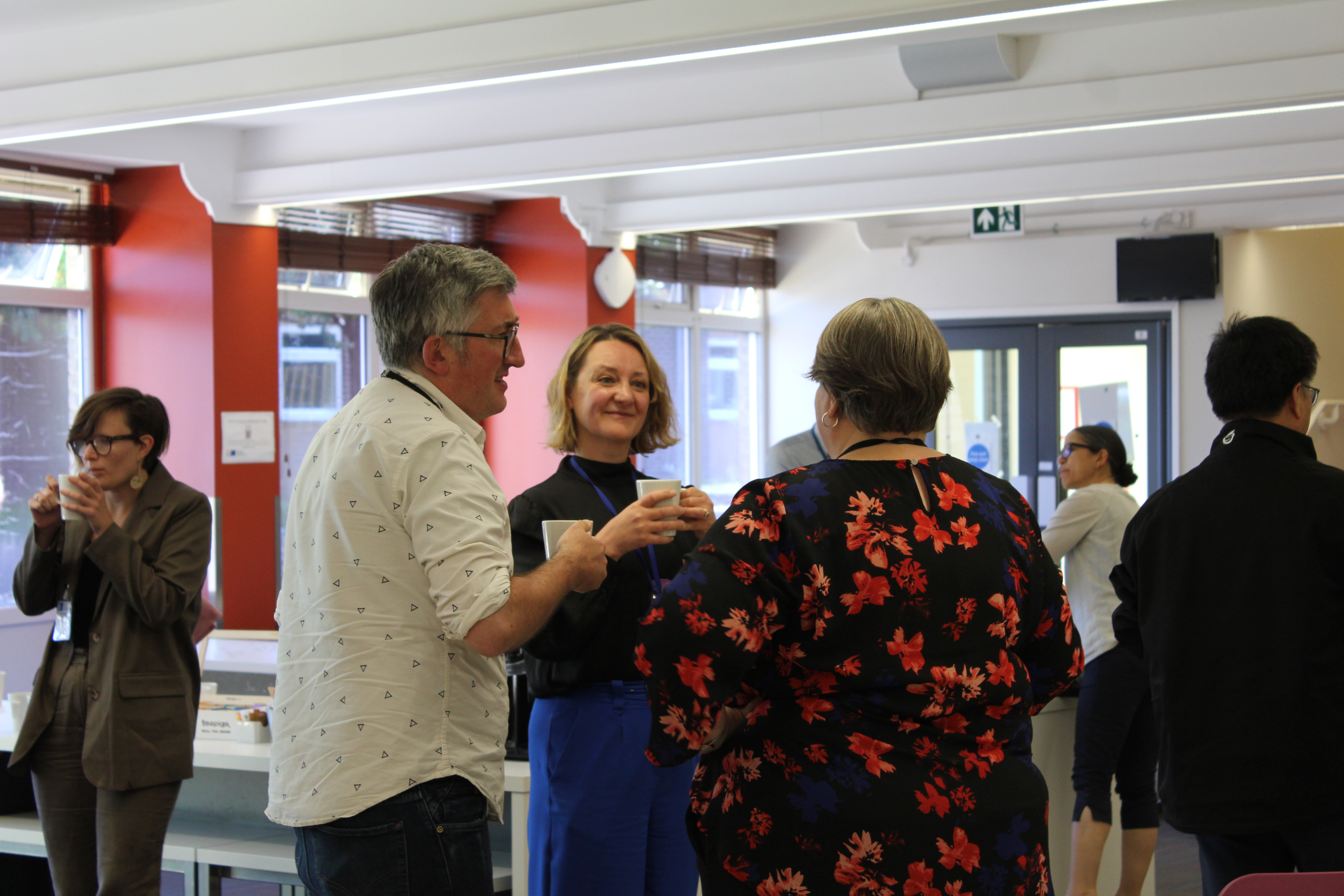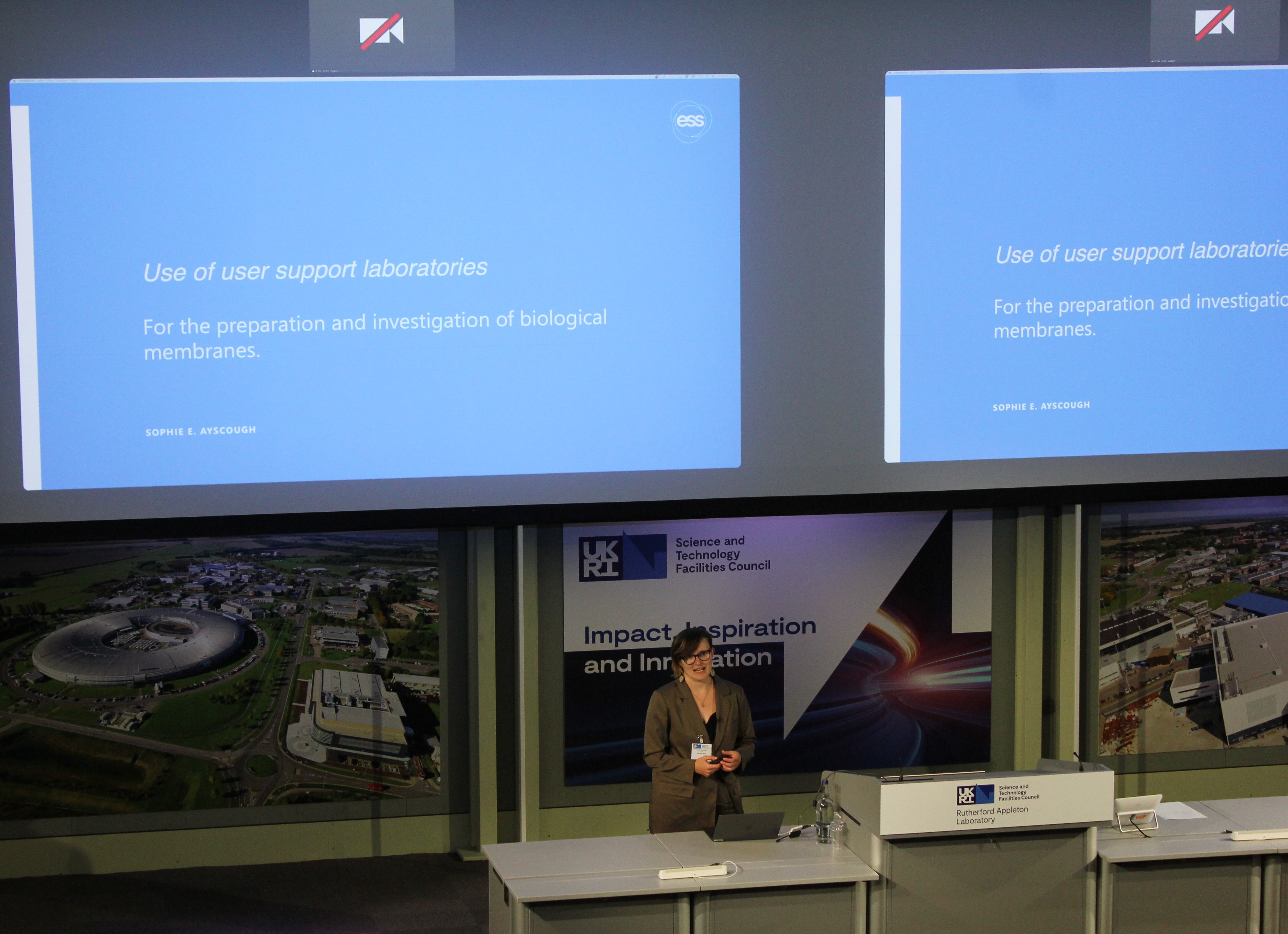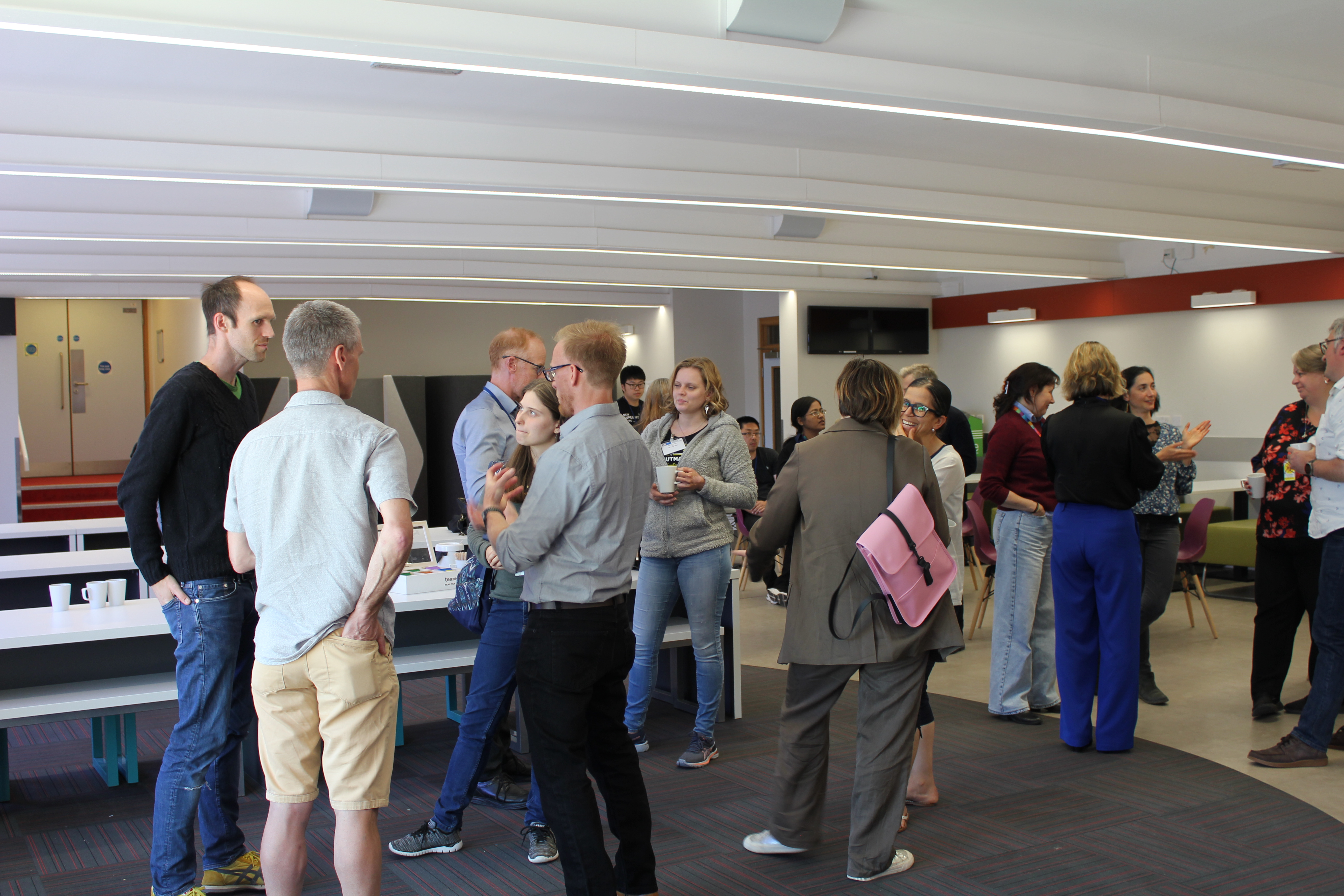 In a change from the first symposium, staff from neutron facilities; ISIS, ILL, NIST, ESS and ANSTO labs, all came together to compare notes on the running and processes used within their facilities. Making the symposium an international event allowed the support laboratories to establish a world-wide network. Their talks brought many discussions on how the labs can collaborate more closely to support one another. Each facility faced it's own challenges, be that staffing, overcrowding or keeping constantly up to date, the discussions of the day successfully allowed the laboratories to compare notes to improve the running of neutron facilities worldwide.
In a change from the first symposium, staff from neutron facilities; ISIS, ILL, NIST, ESS and ANSTO labs, all came together to compare notes on the running and processes used within their facilities. Making the symposium an international event allowed the support laboratories to establish a world-wide network. Their talks brought many discussions on how the labs can collaborate more closely to support one another. Each facility faced it's own challenges, be that staffing, overcrowding or keeping constantly up to date, the discussions of the day successfully allowed the laboratories to compare notes to improve the running of neutron facilities worldwide.
As well as facility talks, many lab users stepped forward to tell us of their support lab success stories from research on nanoparticles as new drug therapies to new types of neutron detectors. The praise from attendees was great. “I thoroughly enjoyed the symposium and found it incredibly beneficial. we ended up in a number of possible collaborations with us across other facilities due to this wonderful symposium. I am thankful to Ludmilla for including us in the symposium and would definitely attend again if invited." Said Jeff Sykora form the ISIS detector group.
Their day began with a tour of ISIS, seeing all the ins and outs and the general impact of the facility as a whole. Roger Eccleston, the director of ISIS, then dropped in to give a warm welcome to the facility and an overview of the exciting updates at ISIS including the endeavour programme.

 Then our speakers took to the floor! Sophie Ayscough (photo left) lead the way, with her research that started in the ISIS biolabs and now is continuing at the ESS support labs. Her research focusses on biological membranes and is one of the many success stories of the support labs. Experiments on membrane proteins require specific support because the proteins themselves have to be added at the last possible minute due to their short lifetimes, so as Sophie herself said “I spent many an hour in the ISIS biolab". Then, when moving her research across to the ESS, she needed to replicate of her experimental set up as much as possible from ISIS. This required coordination and communication between facilities to allow her to continue her research to the highest standards possible.
Then our speakers took to the floor! Sophie Ayscough (photo left) lead the way, with her research that started in the ISIS biolabs and now is continuing at the ESS support labs. Her research focusses on biological membranes and is one of the many success stories of the support labs. Experiments on membrane proteins require specific support because the proteins themselves have to be added at the last possible minute due to their short lifetimes, so as Sophie herself said “I spent many an hour in the ISIS biolab". Then, when moving her research across to the ESS, she needed to replicate of her experimental set up as much as possible from ISIS. This required coordination and communication between facilities to allow her to continue her research to the highest standards possible.

.JPG) The next speaker was one that people may not have thought of at first as a support labs user … the ISIS detector group! Jeff Sykora from the detector group took us through work that “without the support labs, wouldn't even have started". Their research into better detectors, brought them to investigate nanoparticles, which they hope will be able to deal with the higher counts of neutrons from high-flux instruments of the future, such as those at ESS. Jeff and Sarah (his PhD student) – in Jeffs own words “Just a couple of physicists" were enormously grateful for the help the ISIS support labs gave them into this project that became increasingly chemistry based.
The next speaker was one that people may not have thought of at first as a support labs user … the ISIS detector group! Jeff Sykora from the detector group took us through work that “without the support labs, wouldn't even have started". Their research into better detectors, brought them to investigate nanoparticles, which they hope will be able to deal with the higher counts of neutrons from high-flux instruments of the future, such as those at ESS. Jeff and Sarah (his PhD student) – in Jeffs own words “Just a couple of physicists" were enormously grateful for the help the ISIS support labs gave them into this project that became increasingly chemistry based.

Ian Silverwood kicked off the facility talks with the catalysis hub giving us his insights into the “research hotel" where researchers can come for a period of time to complete a set of research. Swiftly following Ian, came the Lab manager at NCNR Labs (NIST), Yamali Hernandez. She spoke of how she is a strong believer that “science needs to be flexible" and so the labs need to be accommodating for when experiments produce unexpected results (to lots of nodding heads in the audience).
After a short break where the attendees enjoyed some tea and were able to discuss more freely (especially over with the detector group), we were back again for more support lab success stories.

The first of these was Fred Campbell from NanoVation Therapeutics, who has worked with ISIS on nanoparticle research. From Covid vaccines to treating eye diseases Fred's group hope to improve our understanding of nanoparticles to make them functional modern therapeutics for thousands of medical issues.
Then the facilities stepped up in full, with the next three talks from Martina Sandroni (ILL, Grenoble), Deborah Wakeham (ANSTO, Australia) and Monika Hartl (ESS, Sweden). Each shared successes of their facility and helped raise queries to the others to assist in their running.

 Monika and the ESS have the unique position of the labs being online before the facility is up and running. This has allowed them to assist with any teething problems such as finding “suspicious yellow powder" or rust in places they don't belong, identify them, and help solve the problem. All in all, the facilities all agreed with our furthest travelled speaker, Deborah from ANSTO who (after showing us her slithering, crawling and cawing “neighbours") stated that “The science always comes first, and we will always help our users!"
Monika and the ESS have the unique position of the labs being online before the facility is up and running. This has allowed them to assist with any teething problems such as finding “suspicious yellow powder" or rust in places they don't belong, identify them, and help solve the problem. All in all, the facilities all agreed with our furthest travelled speaker, Deborah from ANSTO who (after showing us her slithering, crawling and cawing “neighbours") stated that “The science always comes first, and we will always help our users!"
The next day brought further discussions between the facilities on collaboration and future improvements. Followed by a tour of the beautiful, historic city of Oxford and a lovely meal at Baliol College.
Thank you to, all the speakers and attendees for joining the event! It was a fantastic celebration of collaboration success.
